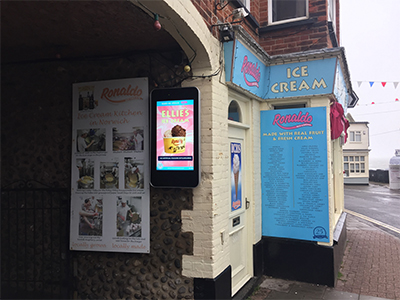(Local authority planning permission may apply)
Our Commercial Grade, 24/7, Sun-Readable (up to 15 times brighter than domestic TV), Landscape/Portrait Outdoor Digital Signage displays are vandal and weatherproof made of steel boasting a robust corrosion-resistant outer casing with IP65 rating – which means they are protected from dust and water, suitable for use in all weather conditions.

Upload content to the inbuilt android media player via USB or Cloud CMS and schedule different content to play at different times of the day, add scrolling text, video and animation to create a dynamic visual display.
inVoke Digital Signage offer a qualified professional installation service and our in-house Design Studio will create AWESOME content for you that you can also use on your website and social media campaigns.
Grab Attention & BOOST Sales




“Our outdoor screen from inVoke is awesome – every business needs this!”
Oxygen Spa

“inVoke had a frame specially made for our outdoor digital screen. It’s fantastic and so stylish, and we’re so, so pleased with the service from the design team. We’d recommend them to any business.”
Abstract Hairdressing

“We are so pleased with the service from inVoke. Sales have definitely increased since having our outdoor digital screen.”
Ellie’s Ice Cream
Oxygen Spa
Abstract Hairdressing
Ellie’s Ice Cream
